The thunder had passed but the wind remained, whipping in the darkness through the prairie grass, over the little hills and scattered oak trees to Brian Winter's field blind.
The retired ecologist waited for dawn. In the soft light, still muddled by storm clouds, Winter watched the grass of a ridge in front of him. Swans glided in a pond just beyond it. A hawk circled out in the distance over a vast western Minnesota prairie.
Winter looked worried.
For the first time in decades, for some reason — maybe the storm or that circling hawk — the prairie chickens were not there.
An hour passed. "Never in my 30 years," Winter said.
People from all over the country and beyond come to Clay County each spring to watch the prairie chickens and their mating dance. Winter leads them, morning after morning, to the Nature Conservancy's viewing blinds — one small tent in between two wood shelters. The birds are so predictable that the blinds were built just 15 feet from where they "boom" — perform for each other to prove their virility and attract a hen.
For some lifelong birders, greater prairie chickens are near the top of a list of must-see species. For others, the goofy and proud dancing birds are a gateway drug that pulls them deeper into the awe and plight of wildlife and the natural world.
The birds arrive every spring, just before and after sunrise to that exact spot, which is mowed each fall to the short shin-high grass they need to see each other.
They will get spooked if they see people walking toward them, Winter said. But they always come back.
At least, they always used to.
The blind began to warm as the sun rose higher. Winter, wearing a cap that read "Our business is booming!" started second-guessing every action he and his group took that morning. With him were a young couple, an amateur photographer, a TV camera crew, two reporters and a handful of bird watchers there to see prairie chickens for the first time. Did they park too close, arrive too late? Winter wondered whether, early that morning before he or anyone else made it to the blinds, a falcon or hawk had attacked and killed one of the birds, sending them back into cover.
"They're going to be really spooked for a while if that's what happened," he said.
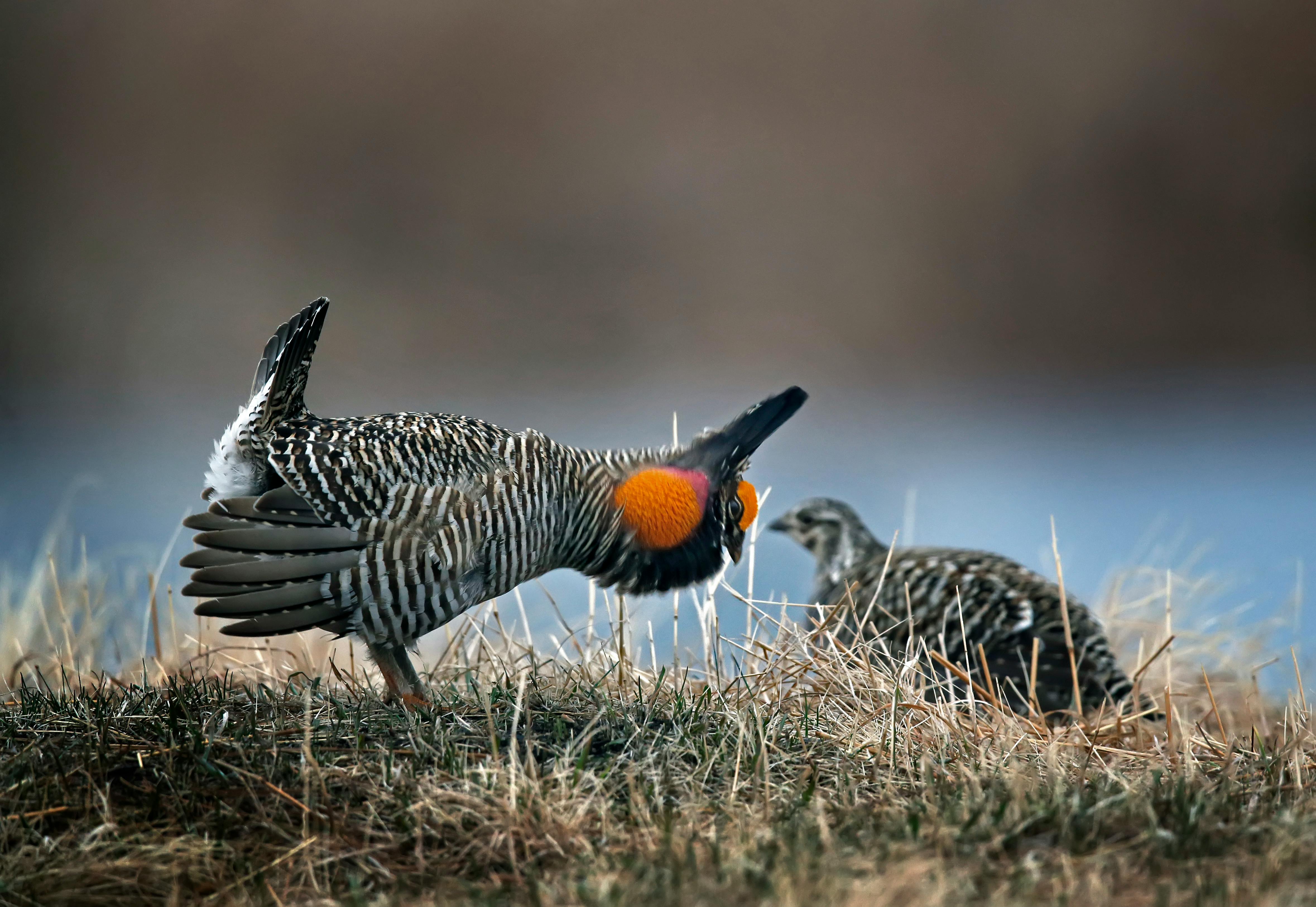
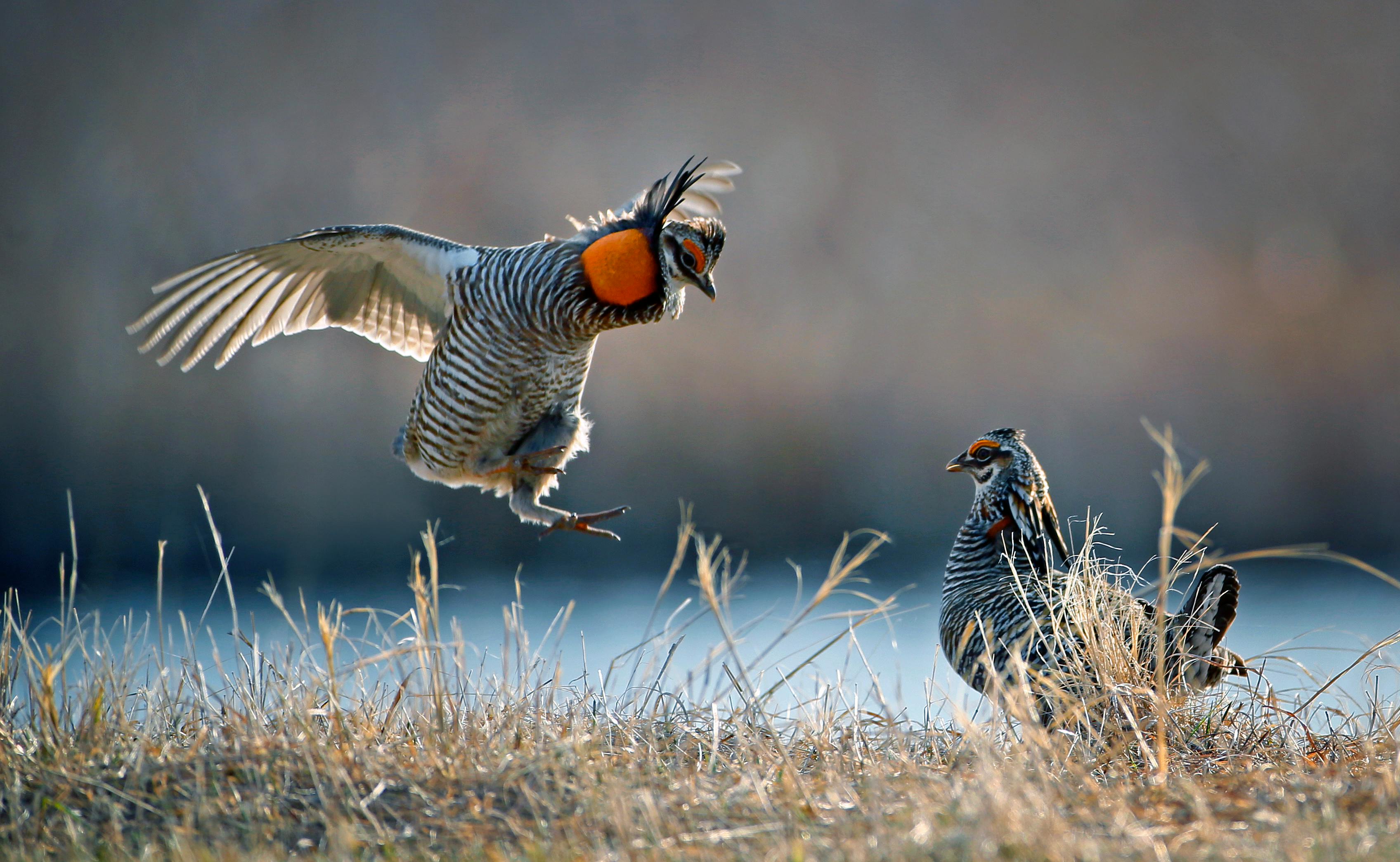
Prairie chickens were once so common in Minnesota their flocks formed black clouds in the sky, casting shadows on the grasslands. As their name suggests, they were a prized source of food, although they have little else in common with the poultry for which they were named. Historical photos show satisfied hunters, guns at their sides, with dozens of the birds hanging on a string.
Winter, 63, with a boyish smile and moppy white hair, helped save the land east of Fargo-Moorhead near the farm town of Glyndon where he now watches for the birds. He spent most of his career as prairie stewardship director with the Nature Conservancy, which restored the 6,500-acre Bluestem Prairie Preserve — one of the last and most significant northern tallgrass prairies left in the nation.
But look at the preserve on a map today and you'll see a small island of green, a speck of nature amid one of the most altered landscapes on the globe. It is surrounded by an ocean of mono-crop farms, heavily tilled, for soybean and corn. It's one of the only pockets of Minnesota's prairie that hasn't been plowed or paved.
With its habitat destroyed, the state's prairie chicken population has dwindled to about 5,000, a tiny fraction of what it was. They are largely cut off from one another, confined to whichever corner of surviving grassland they were born in.
The booming grounds, once a gravel pit, were carefully restored by the Nature Conservancy and the birds moved in, liking it better than a field they'd been booming in about a quarter-mile away.
On some early mornings, when the sky is clear, Winter can see the lights of Fargo from the blind. It is amazing, he said, to think of all that modern world existing so close to something as natural, ancient and mesmerizing as a prairie chicken boom.
"They would never know something like this is happening here," he said.
Many attempts have been made to reintroduce the birds, by capturing them from healthy populations and releasing them into restored habitat. But few have led to any long-term success. The best hope is to keep existing populations safe and expand the preserved land around them so they can naturally spread to other enclaves, keeping gene pools diverse.
Scientists don't know the magic number needed to survive and boom to keep a population going. They know what can happen, because of another bird whose enormous flocks once blocked out the sky.
A man named James Varney went out to hunt prairie chickens on a September morning in 1899 in Babcock, Wis. — about 400 miles from the future Bluestem Preserve. Instead he came across a field of turtledoves. A few rested in a tree. Varney raised his shotgun and took down the biggest one he could see, according to a firsthand account from a member of the hunting group.
But when held dead in Varney's hand, the hunters saw it wasn't a dove. It was a passenger pigeon. In its desperation the young bird apparently sought the safety of any flock it could find.
Passenger pigeons once ruled the flyway, soaring together by the hundreds of millions. Settlers shot them down, and the population collapsed so quickly it became clear the species relied on high numbers and had passed a point of no return. Varney's prey was the last passenger pigeon anyone would see in the Upper Midwest. Fifteen years later, with the death of a passenger pigeon at the Cincinnati Zoo, the animal was declared extinct.
Winter, and a host of others involved with the Minnesota Prairie Chicken Society, hope that preserves like Bluestem will keep prairie chickens from a similar fate.
There was a roll of thunder and distant lightning. Winter fidgeted in his seat as though he had just been asked to give a report on a book he hadn't read. It had been hours since the sun rose.
"This is a first for me in my career," he said. "I do not understand what is going on. This is confusing me right... Oh, there's one! I see him now."
Something moved in the tall grass. Up popped a small dark head. Then another, then three.
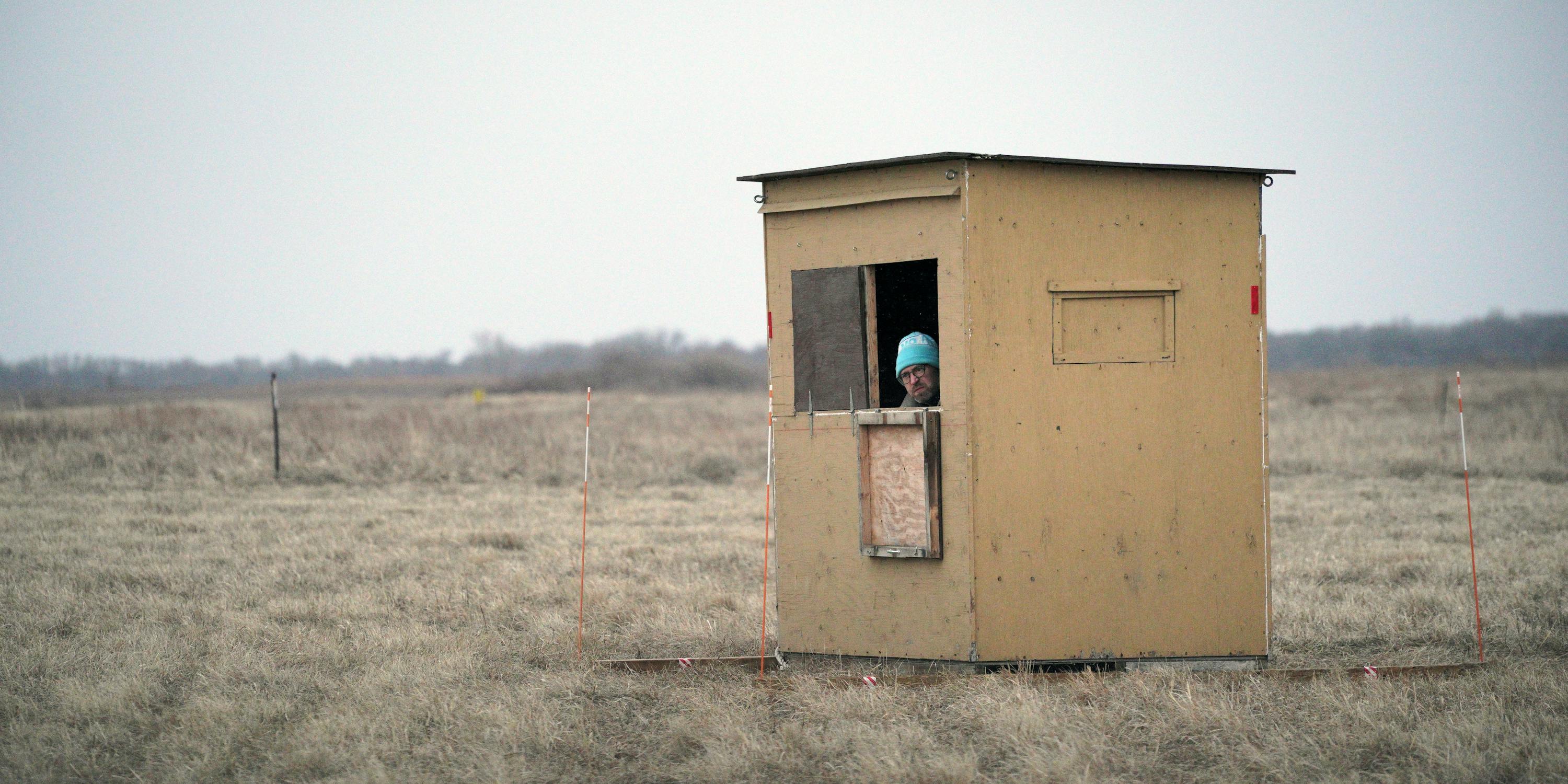
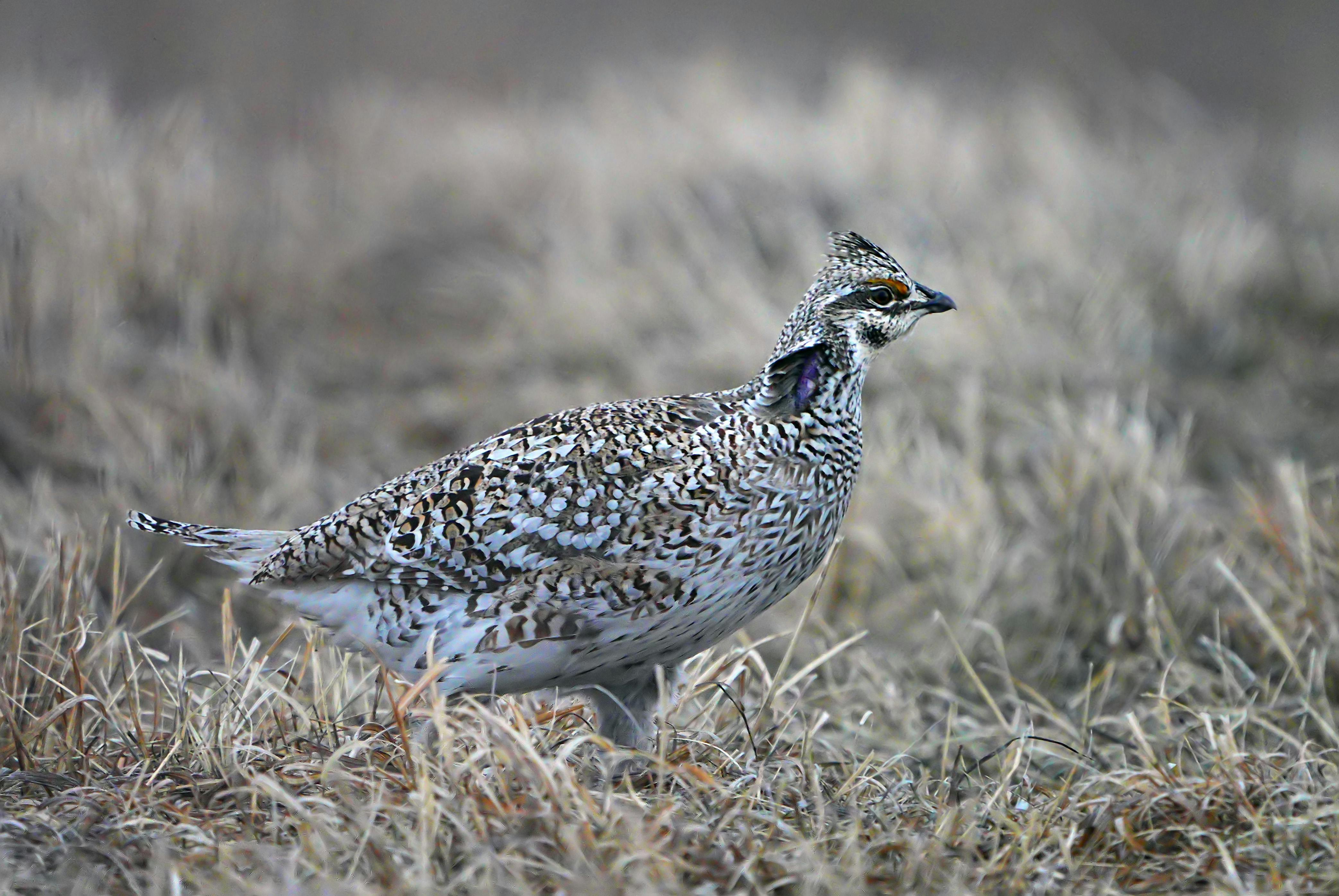
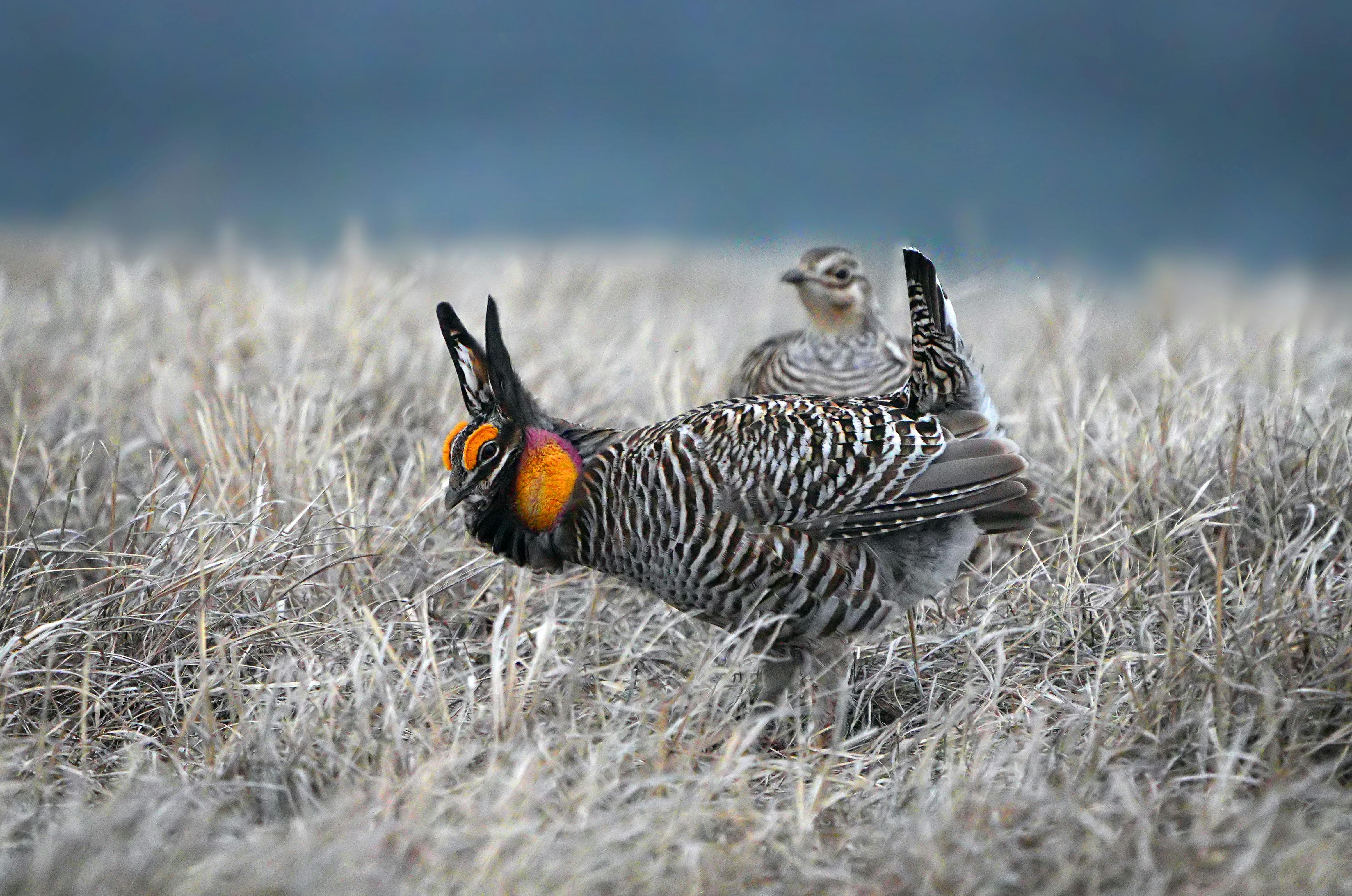
Then they stepped onto the mating grounds. At first it was just a handful, then 15. They fanned out and lined up as if ordered by a drill sergeant. There were no females yet.
Relieved but trying to keep quiet, Winter couldn't help but laugh.
"I have guaranteed this to so many people," he said. "If they didn't show up I was going to have go down there and drag them out."
The birds filled the grounds with their sound — a two-note song, almost alien — and echoed and repeated the notes like chanting monks.
Then they darted at each other, charging with their heads forward, fighting for a puzzle piece of space on the booming grounds. They jumped a foot in the air, cackled, puffed out their orange neck pouches and drummed the ground with their feet, desperate to be seen by a hen.
They raised up their long neck feathers, called pinnae, until they stood erect like two pointed victory ears. There was more swooping and cackling.
The pecking and fighting serves an underhanded purpose, too, Winter said. Not only are they claiming territory, but if they can mess up the other guy's feathers or wing, or cause him to limp a little when a hen appears, they may ruin his chances to mate and increase their own.
A hen arrived. The males went into full-throated fury, jumping higher, booming louder. She sauntered by, as though they were barren stalks of corn swaying in the wind. Three tried harder than most, following her about 50 yards through the field as she meandered. Two more hens showed, with similar results.
If a hen is interested, she plops down in the grass next to the male and makes herself available.
These hens all wandered away. There would be no mating that day.
It was late in the morning then, and Winter needed to start the Minnesota Prairie Chicken Society's annual conference to talk about threats and hopes, successes and failures. He opened the blind door and the birds scattered, disappearing once again into cover.
They — and their human fans — would return the next dawn. As long as there is tallgrass prairie, with small breaks of shin-high grass, they always will.
Share your story
Please share feedback, questions and suggestions by using the form below. Our reporters will not share your information without your permission. Thank you.
Vanishing North
An occasional series in the Star Tribune documenting the biodiversity crisis and the people struggling to head off extinction for Minnesota’s most vulnerable animals and plants.